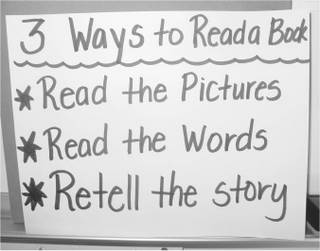3 Ways to Write
Join Our Community
Access this resource now. Get up to three resources every month for free.
Choose from thousands of articles, lessons, guides, videos, and printables.

We love it when our students make connections—then we know they are fully engaged and thinking strategically. Recently, we were talking with a group of kindergarten students about writing. We enthusiastically explained, "Writers have important stories to tell. Writers tell their stories to other people, and they tell their stories with pictures and words." Immediately a hand shot up, and a boy said, "You mean the three ways to read, right?" Actually that was not what I had meant, but I saw the connection he was making and went with it.
"It is a lot like the three ways to read—you are right!" We reviewed the Three Ways to Read anchor chart, and then asked the students to turn and talk about how it was like Three Ways to Write. There was an explosion of conversation, and they were clamoring to get their hands on paper and markers so they could create an anchor chart.
Here is how is what they came up with:
Three Ways to Write:
1) Tell your story with pictures.
2) Tell your story with pictures and words.
3) Tell your story to a partner—act it out.
At this early stage of literacy, the connections between what I can say, what I can write, and what I can read are critical. We love that these young friends are seeing the connections between being a reader and a being writer. They know that when they write a story, they often tell it in pictures. So when they read a picture book, they know the illustrations carry important meaning. When they begin using letters and words to tell their stories, they begin to attend to the printed text of the books they are reading. Most important, they know that reading and writing are meaningful, purposeful, and have a social element. We engage with other readers and writers to talk about our ideas, our stories, and our responses.
It is working like a charm for us in lots of schools and might work with your students, too.






